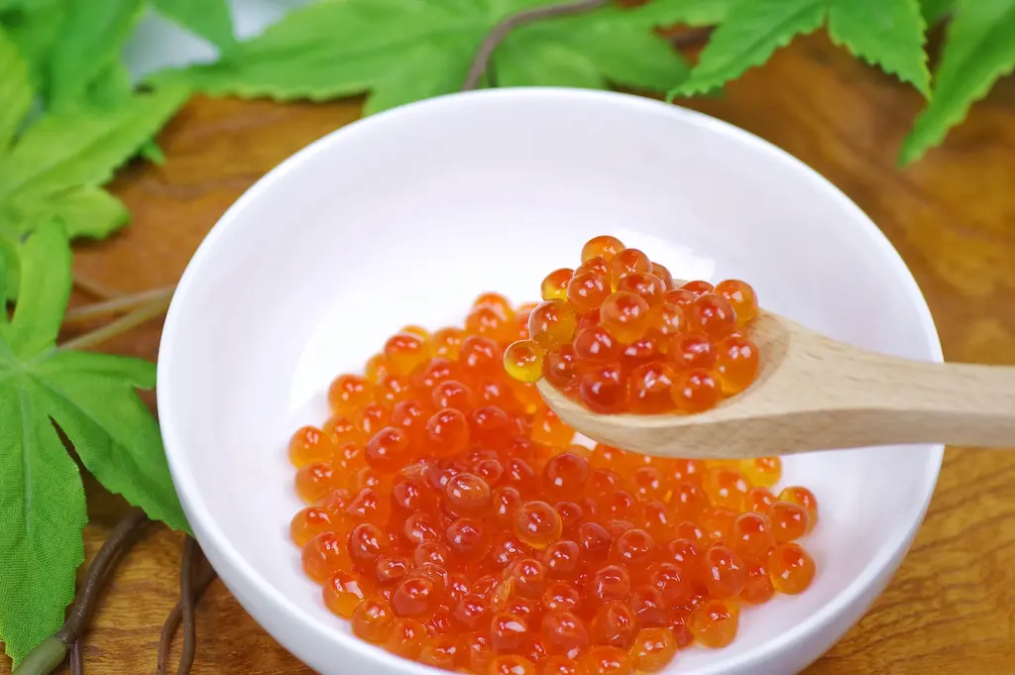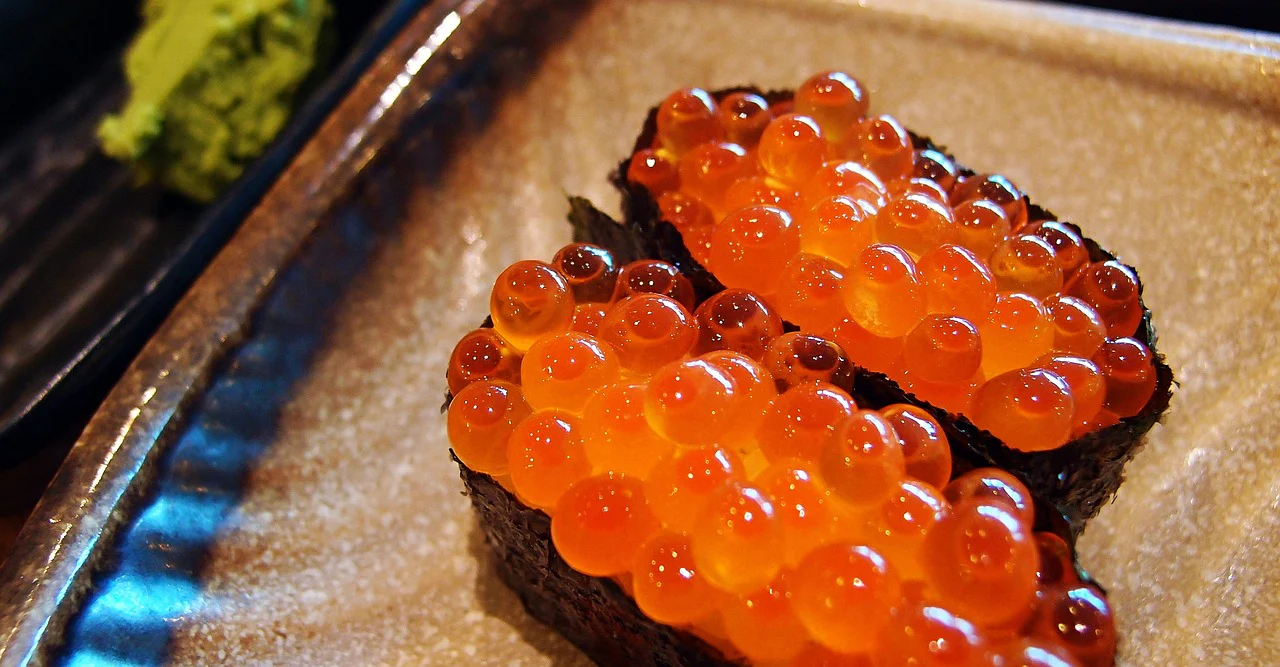Ikura is a beloved ingredient in Japanese cuisine, but for those unfamiliar with it, the question arises: What is Ikura? This vibrant orange delicacy is not only a treat for the taste buds but also an integral part of many dishes, especially in sushi and sashimi. In this article, we’ll explore the origins of ikura, its uses, how it’s made, and why it’s become such a popular choice among food enthusiasts worldwide.
What Is Ikura? A Brief Overview
Ikura is the Japanese word for salmon roe or fish eggs, specifically the eggs from the salmon fish. It is characterized by its large, translucent orange beads, which have a delicate, briny flavor. The eggs are harvested from female salmon, and when processed, they are typically cured in salt or brine to enhance their taste and preserve their texture. The curing process is essential to maintaining the freshness and flavor profile of ikura, which is often served as a topping for sushi, as well as an accompaniment in a variety of Japanese dishes.
Many people may wonder, What is Ikura’s significance in the culinary world? Well, ikura is a high-end delicacy and considered one of the prized items in Japanese gastronomy. It is often associated with luxury dining and is a key ingredient in traditional sushi bars, where it’s served on top of rice in hand rolls or as part of sushi nigiri.
The Origins of Ikura: Where Does It Come From?
To fully appreciate what is ikura, it’s essential to understand its origins. Ikura is made from the eggs of salmon, which are harvested at the peak of their season. The salmon roe has been a staple in Japanese cooking for centuries. While the most well-known ikura comes from salmon, other types of roe can be used as a substitute in various regional dishes.
Historically, the method of preserving the roe involved drying or fermenting the eggs. In modern-day Japan, curing ikura in brine is the most common technique, as it extends the shelf life and imparts a distinct flavor.
This Japanese delicacy is also popular in countries bordering the Pacific Ocean, such as Russia and the United States, where it’s produced and consumed under different names. In Russia, for instance, salmon roe is referred to as “kaviyar.” Regardless of the name or preparation method, the global demand for salmon roe has increased significantly in recent years, contributing to its status as a delicacy worldwide.
How Is Ikura Made?

Now that we know what ikura is and its origins, let’s explore the process of making it. The making of ikura involves careful harvesting, curing, and storage techniques to ensure the eggs maintain their characteristic texture and flavor.
- Harvesting: The first step in making ikura is harvesting the roe from female salmon. The fish are carefully gutted to extract the eggs, which are then gently washed to remove any impurities.
- Curing: After the roe is cleaned, the eggs are placed in a saline solution, which serves two purposes: flavor and preservation. The eggs are typically soaked in brine for several hours or days to achieve the desired balance of saltiness and texture.
- Packaging: Once cured, the roe is carefully drained and packed in containers to keep it fresh. Depending on the type of storage, it can last for several weeks or even months if refrigerated.
While the process of creating ikura may sound straightforward, it requires great expertise and precision to create a high-quality product. This is why premium brands and sushi chefs are known to go to great lengths to source the best ikura for their dishes.
What Is Ikura Used For? Common Dishes Featuring Ikura
Ikura is a versatile ingredient in Japanese cuisine, and it’s commonly featured in sushi, but it also appears in several other delicious dishes. Below are some of the most common ways ikura is used:
Ikura Sushi
One of the most famous uses of ikura is in sushi. Typically, the fish eggs are placed on top of vinegared rice, either in a hand-rolled sushi form (nigiri) or inside a roll (maki). The delicate, salty flavor of the roe pairs beautifully with the mild, slightly sweet taste of the rice, creating a unique and satisfying contrast.
Ikura Donburi (Ikura Rice Bowl)
In this dish, a generous serving of ikura is placed over a bowl of steamed white rice. Sometimes, additional ingredients such as soy sauce, wasabi, and nori (seaweed) are added to enhance the flavor. The dish is simple yet luxurious, allowing the rich flavor of the salmon roe to shine.
Chawanmushi
Ikura is sometimes used as a garnish in chawanmushi, a savory egg custard dish. The creamy custard provides a smooth contrast to the burst of flavor from the salmon roe, making it a perfect accompaniment for the delicate eggs.
Salads and Appetizers

Ikura can also be used to add a touch of luxury to salads, soups, and appetizers. Its briny flavor adds depth and complexity to a variety of dishes, making it a favorite among chefs for its versatility.
What Are the Health Benefits of Ikura?
In addition to its delicious taste, ikura also offers several health benefits. Salmon roe is rich in omega-3 fatty acids, which are known to promote heart health and reduce inflammation. Additionally, ikura is packed with essential nutrients such as vitamins A, D, and B12, as well as minerals like selenium and iodine.
Despite its health benefits, it is important to consume ikura in moderation due to its high sodium content, especially when prepared with salt or brine. People with high blood pressure or sodium-sensitive health conditions should enjoy ikura sparingly.
What Is Ikura’s Role in Modern Cuisine?
Today, what is ikura extends beyond Japanese sushi bars. As global food trends continue to evolve, the popularity of ikura has transcended cultural borders, making its way into fusion dishes and gourmet restaurants worldwide. Chefs experiment with incorporating ikura into a wide range of international cuisines, using it in everything from pasta and pizza to gourmet canapés and cocktails.
The appeal of ikura is not just in its unique flavor but also in its striking appearance. The translucent orange eggs add a touch of elegance and vibrancy to any dish, making it a visual as well as a culinary delight.
Conclusion: The Timeless Appeal of Ikura
So, what is ikura? It’s much more than just a delicacy; it’s a symbol of luxury, craftsmanship, and versatility in the world of fine dining. From its origins in Japanese cuisine to its incorporation into modern fusion dishes, ikura continues to captivate food lovers around the globe.
Whether you’re enjoying it as part of a sushi platter or experimenting with it in a new culinary creation, ikura’s distinctive flavor and texture are sure to elevate any dish. As you explore its many uses, you’ll discover that this vibrant, briny treat is truly one-of-a-kind, deserving of its place as a treasured ingredient in kitchens worldwide.

